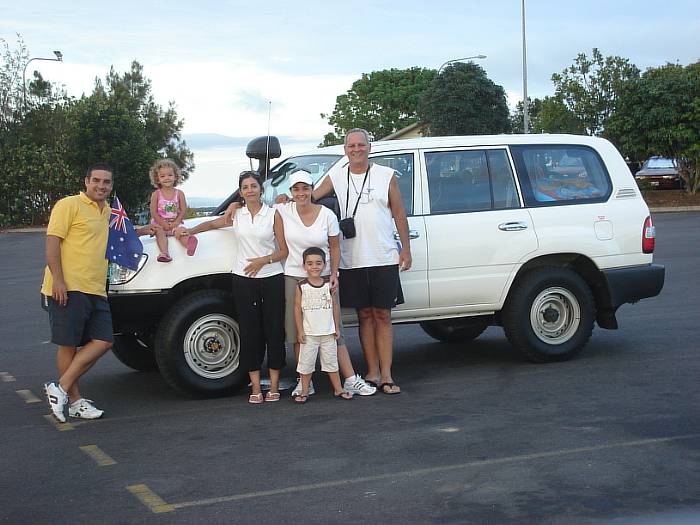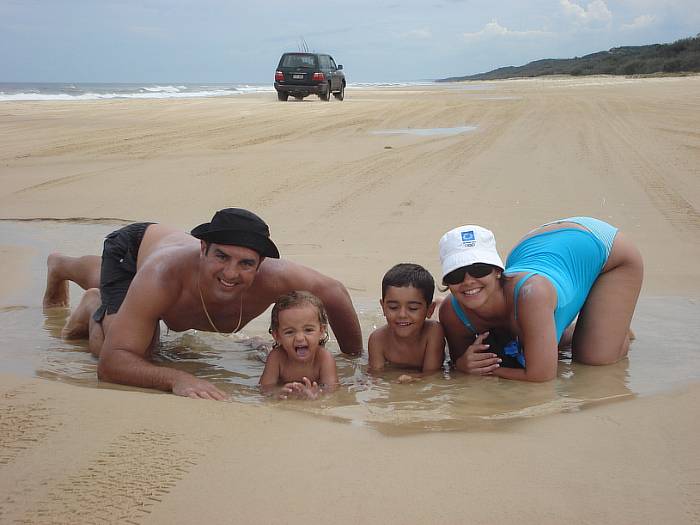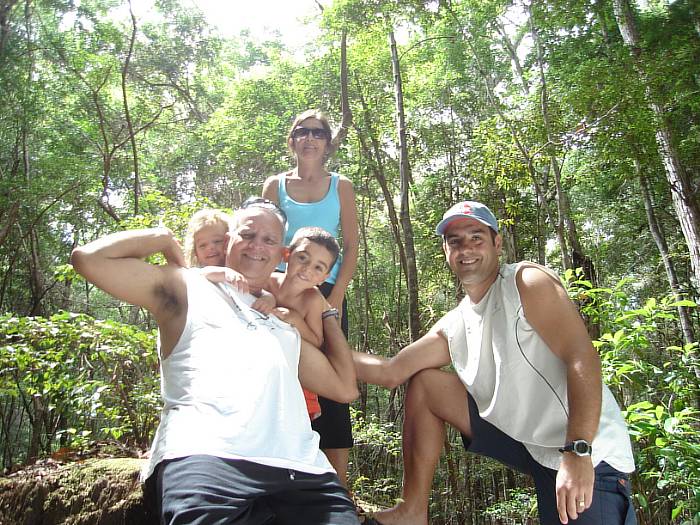

In the Australia day Holiday we decided to spend the long weekend on Fraser. We rented a holiday beach house and drove to Fraser. We travelled extensively through Fraser on the 5 days we spent there. We include two galleries of photos to give an idea of the place and what we did during this great holidays.
Just click on the thumbnails to enlarge the photo.
Fraser Island is a heritage-listed island located along the southern coast of Queensland, approximately 200 kilometres north of Brisbane. Its length is about 120 kilometres and its width is approximately 24 kilometres. It was inscribed as a World Heritage site in 1992. The island is considered to be the largest sand island in the world at 1840 km2. It is also Queensland's largest island, Australia's sixth largest island and the largest island on the East Coast of Australia.
The island has rainforests, eucalyptus woodland, mangrove forests, wallum and peat swamps, sand dunes and coastal heaths. It is made up of sand that has been accumulating for approximately 750,000 years on volcanic bedrock. Unlike on many sand dunes, plant life is abundant due to the naturally occurring mycorrhizal fungi present in the sand, which release nutrients in a form that can be absorbed by the plants.
Fraser Island is home to a small number of mammal species as well as a diverse range of birds, reptiles and amphibians, including the occasional saltwater crocodile.
Fraser Island has been inhabited by humans for as much as 5,000 years. Capitan James Cook sailed by the island in May 1770. Matthew Flinders landed near the most northern point of the island in 1802. For a short period the island was known as Great Sandy Island. The island became known as Fraser due to the stories of a shipwreck survivor named Eliza Fraser. Today the island is a popular tourism destination.
Fraser Island has over 100 freshwater lakes, as well as the second highest concentration of lakes in Australia after Tasmania. The freshwater lakes on Fraser Island are some of the cleanest lakes in the world.
Estimates of the number of mammal species present on the island range from 25 to 50. Mammals found on Fraser Island include swamp wallabies, echidnas, ringtail and brushtail possums, sugar gliders, squirrel gliders, phascogales, bandicoots, potoroos, flying foxes and dingoes. There are 19 species of bats which live on or visit Fraser Island.
Dingoes were once common on the island, but are now decreasing. The Fraser Island dingoes are reputedly some of the last remaining pure dingoes in Eastern Australia and to prevent cross-breeding, dogs are not allowed on the island. Up until 1995, there were no official records of dingoes attacking humans on Fraser Island. In April 2001, a boy named Clinton Gage wandered away from his family and was attacked and killed by several dingoes.
Over 120 dingoes were killed by rangers as a result of the incident, though locals believe the number was much greater. After the 2001 attack, four dedicated rangers were allocated dingo management roles and ranger patrols were increased. There are fines for feeding dingoes or leaving food and rubbish out which may attract them.
The flora of Fraser Island is diverse. More than 865 species of plants thrive on the island. It is the only place on earth where tall rainforest grows in sand. The island contains the largest extent of wallum heath remnants in Queensland. In Pile Valley, 1,000 year old rough-barked satinays are found. Despite being logged the kauri pines dominate in some areas. Scribbly gums, red gums, piccabeen palms, blue quandong, brush box and pandanus all grow on Fraser Island.

Waiting for the ferry

Fraser west beach

Old tropical forrest